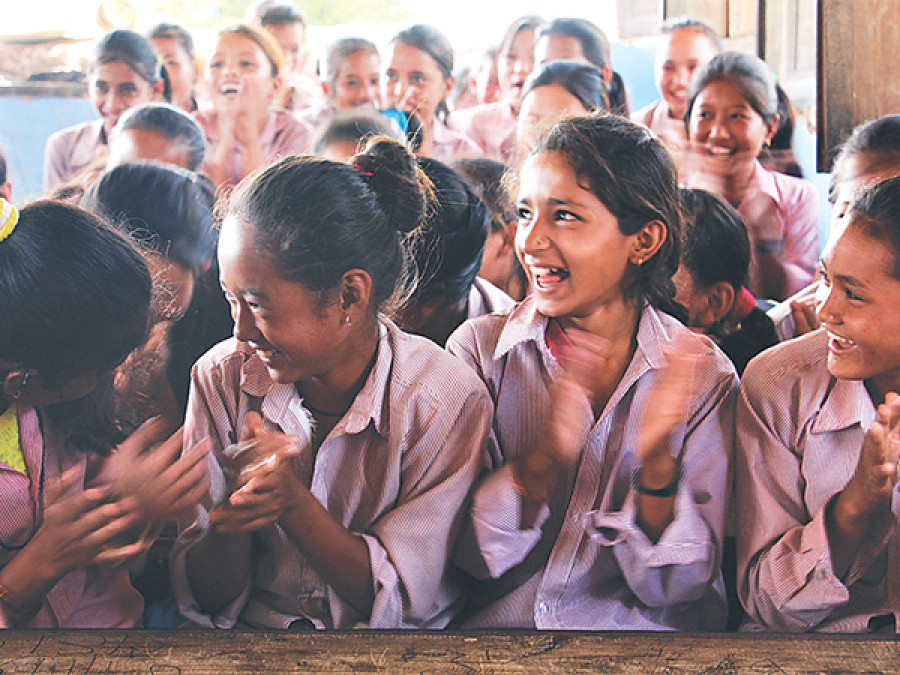Miscellaneous
Theatre for therapy
We are well accustomed by now to the earthquake statistics that have served as the opening sentences for most articles based on the issue. More than 9,000 people lost their lives, 23,000 more were injured, and countless others were displaced due to the quakes. However, physical damages aside, there was keen focus on the survivors’ mental health issues, which inevitably arose afterwards.
Abhijan Chitrakar-Phnuyal
We are well accustomed by now to the earthquake statistics that have served as the opening sentences for most articles based on the issue. More than 9,000 people lost their lives, 23,000 more were injured, and countless others were displaced due to the quakes. However, physical damages aside, there was keen focus on the survivors’ mental health issues, which inevitably arose afterwards.
Many groups raised concerns about the state of child victims after the disaster. UNICEF published an article on their website (Nepal Earthquakes: Looming Crisis for Children’s Emotional Health) warning against potential issues and stating the need for ‘emotional first aid’. With children being particularly vulnerable to these issues, the special focus given to them is justified. While severe cases of post-traumatic stress disorder or other specific mental health issues undoubtedly require professional help, the general anxiety that is still present among the people—children in particular—can be addressed through more accessible means. Many people volunteered at affected schools and facilitated activities such as general group discussions, art activities, and so forth, to lift the spirits of the children. However, interactive forms of theatre could very well address the need to boost morale among both children and adults. These forms can fall under ‘drama therapy’, which uses theatrical techniques to address mental health issues. With almost five months having passed since the earthquake, there are many organisations with specialised professionals working on the ground dealing with these mental health issues. Volunteers today can be as important as they were during the weeks following the earthquake, and they can make a difference through theatre.
The admirable drive to volunteer during the earthquake did not only go towards providing physical help to clear rubble, assist the building of temporary shelters, and so forth. Some people visited makeshift schools (there was a general consensus that running schools in any manner would bring a sense of normality into the lives of its students) to interact with the children. A few friends and I spent a week volunteering in Kavre—the second-most quake-affected district. We primarily went to schools in the area with other volunteers and interacted with the children as a ‘psycho-social counselling’ group. We facilitated a range of activities, from involving the children in musical performances to playing games with them. But the undoubted success was our theatrical activity. As we had backgrounds in theatre from school, we did an activity where we asked the children to provide us with stories, jokes or anecdotes which we would promptly act out for them in a comedic fashion. The response was great from both teachers and students.
We reflected on each of the sessions—supposed to serve as a form of emotional first aid—that we conducted there, and one of the main issues that we came across was when we did activities which relied too much on the students to deliver. Simply visiting these children and demanding that they tell jokes, stories, sing, or dance to entertain themselves and hence boost their morale was unfair for them and ineffective. As facilitators, we had to bring more to the table. The great thing about our interactive theatre activity was that there was a collaborative effort from all parties involved.
Even in a regular context, theatre serves as a great tool of expression with basic benefits ranging from physical awareness, increased focus, improved confidence, and so forth. The art form has its roots in dramatised storytelling and ritual practices, and has impacted cultures and their expression for many years. In more recent times, drama therapy has become a genre in itself and is now widely practiced in various settings such as in schools, hospitals and prisons, among many others. Education practitioners have found it especially useful, with one of the popular ways of teaching children about bullying now being through forms of interactive theatre. But these forms are not only for children, and are used to explore deeper social issues. The Freire-inspired Augusto Boal’s Theatre of the Oppressed is a form of theatre which aims to promote social and political change. Contrary to other forms of theatre where the audience is passive, this form requires the participation of its ‘spect-actors’ in shaping performances and plays. The effect of having an active audience play out mock real-life scenarios dealing with troubling issues is that it empowers people who have been oppressed.
Theatre can serve to be of a much larger social importance than it is today. We have to concede that formal education failed in disseminating important information regarding earthquakes to the general public—many unfortunate deaths and injuries were a result of poor judgement during the disaster. A theatrical medium can be used to relay important information to far more attentive audiences. In our present post-disaster context, volunteers can easily conduct general theatre activities that serve as quasi-games, which are highly effective tools in boosting the morale of children and adults in groups. However, projects with trained theatre professionals, who use interactive theatre forms to discuss sensitive issues regarding the earthquake, such as mourning loss or dealing with severe anxiety among all ages, can make a bigger impact in dealing with the current mental health issue.




 7.12°C Kathmandu
7.12°C Kathmandu










